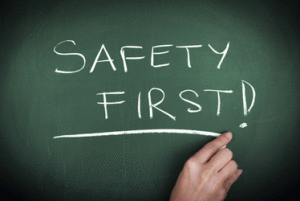In our climate, homes are often closed up for long periods to make heating and cooling efficient. If you have fuel-burning appliances or equipment like a furnace, water heater, kitchen range or clothes dryer, well-functioning carbon monoxide detectors are a necessity to protect your family's well-being when your home is closed up against the weather.
How CO Detectors Help Protect Against Exposure
Carbon monoxide is a byproduct of incomplete fuel combustion, and this lethal, invisible gas has no taste or odor. If inhaled, CO attaches to hemoglobin the bloodstream, which deprives the brain, organs and body cells of vital oxygen. Carbon monoxide detectors have sensors that can detect the presence of the gas and produce a loud alarm to warn you against:
Low level exposure that causes flu-like symptoms including fatigue, nausea, headaches and dizziness.
High concentrations of CO that can rapidly cause unconsciousness, coma, brain damage and death.
Keeping Your CO Detectors Working Properly is Key
The first step in protecting your family against accidental carbon monoxide exposure is to install detectors on each level of your home. To ensure that these essential safety devices are able to warn you when CO is present, you can't simply install them and forget them. Instead, you need to keep them working properly by:
Testing all your detectors monthly.
This usually involves pressing the test button and waiting for a high-pitched beeping sound that signals the unit is working.
Replacing the batteries in each device at least annually.
This necessary maintenance for plug-in detectors too, so the battery can keep the unit functioning during a power outage.
Replacing failing detectors as needed.
CO detectors lose their ability to sense CO gas after about five to seven years. New models give an audible warning to alert you when they need replacing.
Keeping your fuel-burning appliances and equipment well maintained.
Any combustion devices should have annual preventive maintenance that includes an inspection, cleaning and tuneup to keep them operating safely.
To schedule water heater or HVAC maintenance that can help your carbon monoxide detectors protect your Broken Arrow home, contact us at Air Assurance.
Our goal is to help educate our customers in the Tulsa and Broken Arrow, Oklahoma area about energy and home comfort issues (specific to HVAC systems). For more information about other HVAC topics, call us at 918-217-8273.









